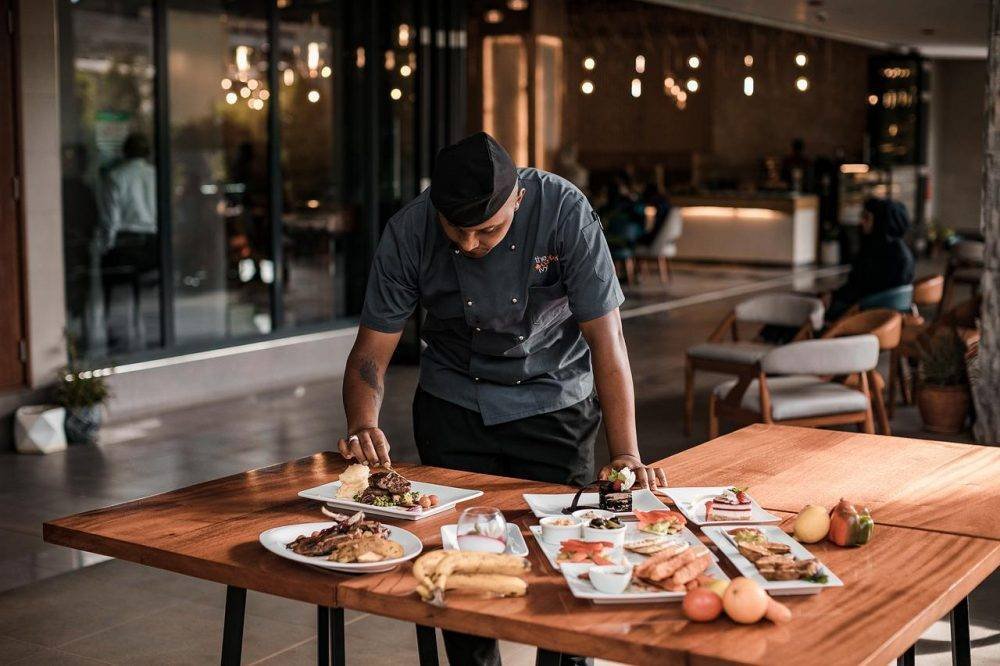For many prospective entrepreneurs, owning and managing a restaurant is a fantasy job. This desire may have been put on hold when the epidemic drove eateries to suspend indoor eating or possibly shut their doors forever.
How to Open a Restaurant
As the restaurant sector tries to recover, restaurant owners around the nation continue to feel the consequences of the coronavirus. To weather the economic downturn, the food service industry has embraced new restaurant trends and diversified income sources.
Many feel that restaurant ownership is still attainable, so we’ve compiled a checklist to help you get started. The sector is fast-paced and ruthless, with the business environment resembling a vicious game of “survival of the fittest” in which only the strongest can escape bankruptcy.
Opening a restaurant requires time, money, and substantial industry expertise. If you’re reading this piece, you’re likely seeking confirmation, which is where we come in to continue reading to learn the procedures you must follow while starting a restaurant.
How to Start a New Restaurant
Beginning a restaurant involves meticulous preparation and is more achievable when divided into phases. If you are interested in learning how to operate a restaurant, we have compiled a 10-step guide to assist you.
- Write a Business Plan
- Select a Site and Lease Commercial Real Estate
- Select a Restaurant Theme and Brand
- Make Your Menu Plans
- Restaurant Permits and Licenses
- Plan Your Space and Layout
- Find a supplier of equipment and food
- Employ the Right Team
- Advertise Your Restaurant
- Organize a Soft Opening
1. Write a Business Plan.

You may be brimming with wonderful ideas, but there is so much work to be done that you will need to write everything down. Codifying your company strategy helps you organize your ideas and will aid you in the future when it comes to securing financing. When navigating the early stages of ownership, you may refer back to your business plan to stay on track. As with any new company, opening a restaurant needs a good business plan.
This is the phase that may prove difficult for those inexperienced with business plans and their format. The components of a restaurant business plan address all facets of your new firm, from the restaurant’s idea to its finances. The objective of the business plan is to assist you in fleshing out the finer aspects and summing up your company for possible investors. When applying for financing, the restaurant business plan serves as evidence of the venture’s viability.
2. Select a Location and Lease Commercial Space.
The following considerations are among the most significant when selecting a site for a new restaurant: Visibility and Accessibility: Choose a site that is highly visible and accessible by both automobile and foot traffic. Consider automobile and pedestrian parking availability and ease of access. Your restaurant’s target market should reflect the area’s demographics. Cost of Labor: Your labour costs will vary based on geography. In places with a higher cost of living, you will need to offer a higher salary to attract qualified workers. You may learn a great deal from observing the restaurants competing in your neighbourhood.
The idea is to find a place where comparable restaurants are popular but avoid densely populated areas with restaurants that directly compete with your concept. When selecting a location, we propose leasing. It gives you greater freedom if you wish to grow or make other initial company adjustments. You will need a property from which to operate, so look for commercial space in your preferred region. Consider the space’s visibility, the local demographics, and the labour expenses in the region. By leasing a home, you may minimize early expenditures.
3. Select a trusted source and concept.
The restaurant’s concept will serve as the foundation for all other aspects. For instance, would you be a ghost kitchen that delivers Indian food to people’s doorsteps or a sit-down restaurant that offers unique experiences? Choosing an idea is the simple part; branding requires more consideration. Here is where you may evaluate your company’s principles and how you want the public to see you. Everyone will recognize your brand regardless of where they encounter your firm. Consider the “M” McDonald’s; when you think about it, you know precisely what it is and what company it represents.
A strong brand will help you establish your control in the intimidating restaurant industry. How you choose to express your restaurant’s objective and identity to the public is a more precise definition of your brand. Your restaurant’s name, logo, menu design, and products should convey a unified brand image. The design and strategy of your advertising channels should be highly influenced by your brand identity.
4. Design a Food Menu.
There is no use in operating a restaurant if the cuisine is not excellent enough to attract and retain customers. You should plan a meal that is easy to execute and delicious in appearance and flavour. Although you will have an idea of what cuisine you want to offer, you need to do market research to ensure that there is local demography for it and a market gap.
5. Restaurant Licenses and Permits.

To operate as a lawful company in the eyes of the law, restaurants need a multitude of licenses and permissions, including the following. liquor license. Serving alcoholic beverages requires a license. The application procedure might be lengthy; thus, you should begin early. business license. In the United States, restaurants need a business license to operate, which must be renewed at certain intervals. food license. Before you can begin serving food, you will be required to undergo a food inspection to ensure that your establishment complies with all rules. identification number assigned to each employee. Without this number, you will be unable to recruit any employees, failing.
6. Design Your Structure and Space.
Once you’ve acquired your location, you need to design your restaurant. You must determine the seating capacity, the restaurant’s furnishings, and the atmosphere. When building a restaurant, you must consider its functionality, particularly in terms of cooking and cleaning.
There are two aspects to consider when planning the layout of your new restaurant: the front-of-house and back-of-house areas. Each place has its particular needs. Consider collaborating with an industry specialist to produce a bespoke design plan that matches your demands if you want help. Consider the following elements while creating your dining room layout:
Seating Capacity
Local rules dictate the dining room’s seating capacity. You must fulfil square footage per client criteria depending on the size of your location and the number of exits.
Dining Room Furnishings
Select seating that complements your idea. When selecting the design and form of your restaurant’s furnishings, take seating capacity and comfort into account.
Environment & Décor
You may improve the ambience of your restaurant by using décor and lighting. Flooring and wall fittings should be constructed from materials that are simple to clean and disinfect. Because it absorbs smells and spills, carpet is not a good option for a dining area. Fabric window coverings and drapes retain odours and are expensive to frequently clean. Consider the flow of service and allow appropriate space for the following duties when building your kitchen layout.
Dishwashing.
The dishwashing area should be conveniently accessible to servers who enter the kitchen carrying soiled dishes. This section will have dish machines, sinks with separate compartments, and drying racks.
Dry and Cold Storage.
Dry and cold storage spaces should be located adjacent to the receiving area to expedite the placement of goods. There will be a need for storage and organization in these areas.
Food Preparation.
This is where the kitchen crew will complete all food preparation duties. You will need room for workstations and food preparation equipment. Meal Preparation – This is where the bulk of culinary duties are completed. You will need space for large appliances such as range tops, deep fryers, and flat-top grills.
Service.
The service area should be next to the kitchen so that cooked dishes may be swiftly transferred to servers. A staging room equipped with heat lamps keeps meals warm until they are collected.
7. Locate Equipment and Food Manufacturers.
Before you can open your new restaurant, you must equip the kitchen with the necessary supplies. Every restaurant requires certain sorts of equipment, such as refrigeration units and kitchen equipment. Depending on your menu, you may also need pizza deck ovens and pasta cookers. The size and layout of your kitchen will influence some of your decisions, such as whether to buy equipment with a shallow depth or double-stack units to conserve space. Purchasing restaurant equipment online offers several advantages. The flexibility to purchase online, study features, and compare pricing on your own time might ease some of the stress associated with starting a new business.
Find an internet retailer that specializes in equipment and offers wholesale pricing and expedited shipment. Leasing equipment is an alternative that may save you money and free up budgetary resources for other expenses. You will also need to locate a source for meals, disposables, and any other products that will be reordered often. Working with a provider that provides membership discounts and free delivery can save you money when ordering in bulk.
8. Hire Qualified Personnel.

The recruiting phase of launching a new restaurant gives you the chance to establish a positive work environment from the very beginning. Considering the work-life balance of your prospective workforce requires careful consideration of employee perks, training programs, and incentives. If you prioritize these elements, your staff retention will be more effective. Start by assembling your management team so that they can assist in achieving your purpose and hiring objectives.
Create a list of all the restaurant roles you will need to fill daily. Consider the number of weekdays you will be open and the number of front-of-house shifts you will operate daily. Your staffing needs may vary depending on the specifics of your new restaurant, but the following roles are among the most common: The general manager, kitchen manager, and front-of-house manager comprise the management team.
The kitchen staff consists of the executive chef, sous-chefs, line cooks, and dishwashers. Servers, hosts, food runners, and bussers make up the front-of-house staff. The staff of the Bar Bartenders, Barbacks, and Cocktail Servers You may also need to recruit marketing gurus, public relations specialists, and accountants. To prepare for the interview process, please review our guide to restaurant interview questions so that you may choose the most qualified individuals.
9. Advertise Your Restaurant.
When opening a new restaurant, you must spread the word and attract potential customers. Advertising gives potential clients basic information about your business, such as its location and the type of food it serves. Successful advertising should also generate enthusiasm for the brand. Here are some suggestions for promoting your restaurant:
Creating a Website:
Your website should be user-friendly with a design that reflects your brand. Include the restaurant’s location, phone number, operating hours, and menu, as well as any other pertinent information.
You may engage a professional to construct your website, but you can also utilize a user-friendly website hosting platform such as Wix, Squarespace, or WordPress to do it yourself. Make an account on Yelp, TripAdvisor, Google My Business, and OpenTable- Registering with these sites facilitates the discovery of your restaurant’s information by prospective customers. Guests may also post reviews after their stay, which boosts their credibility and desirability, particularly if they have a high rating and favourable comments.
Utilize Social Media
Today, restaurants must have a social media presence. You can create Facebook, Twitter, and Instagram profiles to post restaurant-related news, images, and tidbits. If your target audience often utilizes TikTok, it may be a suitable social media alternative for your business. Offer Promotions to First-Time Visitors Offer a promotion to first-time visitors. A complimentary beverage, dessert, or a reduction on their first bill is a tempting method of attracting consumers. Create excitement about your new restaurant by holding a big opening. Other special activities such as wine tastings, live music, and culinary workshops are also excellent attention-getters.
10. Hosting a Soft Opening.
You have likely heard the adage, “Practice makes perfect.” It is equally applicable to restaurant openings. A “soft opening” is a trial run used to prepare for a restaurant’s official grand opening. You can invite a limited number of visitors to your soft opening, often the friends and family of your employees. This method helps you iron out any service flaws. Here are some common examples of soft openings:
A Sample Menu:
Provide a menu with a limited number of items.
It lessens stress for new employees and encourages consumers to return to see the whole menu. Consider operating on a limited timetable during the initial few days of your business’s existence. Host a “sneak peek” happy hour including select menu dishes and unique cocktails. Invite friends and family to your soft opening for a pleasant and stress-free way to prepare for the big opening. Adjacent Homes and Businesses: Acquire local fans and foster community pride by inviting nearby businesses and homes to your soft opening.
Final Touches.
Working with the appropriate individuals will make all the difference after you have your land, finances, and essential permits in place. In addition to employing employees, you will need to advertise your firm so that people can find you. If marketing is not your forte, you should hire a professional. It is tough to open a restaurant, and many new enterprises fail before they can even walk. Take your time, ensure legal compliance, and be willing to make errors and learn from them.


